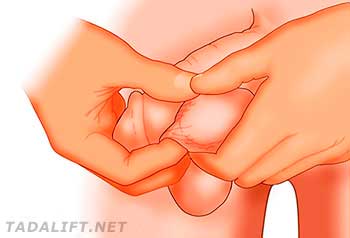Male health is an important aspect of the overall health. That is why regular visits to the doctor are the foundation of balanced health and managed symptoms of any disorders. However, while males are frequently too busy with work, some other issues or business meetings, self-examination can easily replace the arrangement with a doctor. A testicular self-exam is quite a simple way for a man to check the testes and exclude the risk of testicular cancer, bumps or lumps. Regular test, which will be fulfilled on a monthly basis, can help you learn the usual shape and size of your testes, which will help you further feel the difference and specify abnormalities.
Generally, testicles belong to male reproductive organs, which reach the size of 2 golf balls in adult males. The testes are covered with a special skin sac, known as the scrotum that hangs beneath the penis. The testes complete two functions:
- Produce testosterone and other hormones;
- Make sperm.

Any damage or abnormality related to male testes can cause serious problems, including infertility, cancer, and others. Thus, self-examine your testicles regularly to eliminate the risk of possible complications. Notice any changes and contact the medical specialist if the differences are significant.
It is vital to remember that there is nothing harmful or painful about self-examination. It will take you several minutes. Undergo several important steps to exclude possible health complications:
- Start the checkup after a warm shower, when the scrotum skin is relaxed;
- Hold the penis out, so that it does not disturb the process;
- Start with a single testicle and check one at a time. Use both hands, rolling it between the thumb and fingers;
- Despite normally the testes should be of the same size and shape, some insignificant differences are allowed. It is not a reason for concern;
- Do not forget about the cordlike structures behind the testicles. They store sperm, so it is not a lump.
Definitely, you will not find a huge lump since it is quite rare. The average size of a lump is a pea-size. Once you have noticed something similar, you need to contact your doctor immediately and start the treatment as soon as possible.

